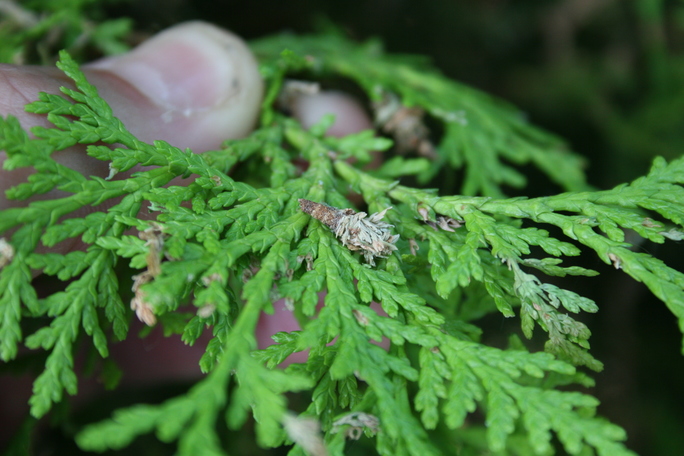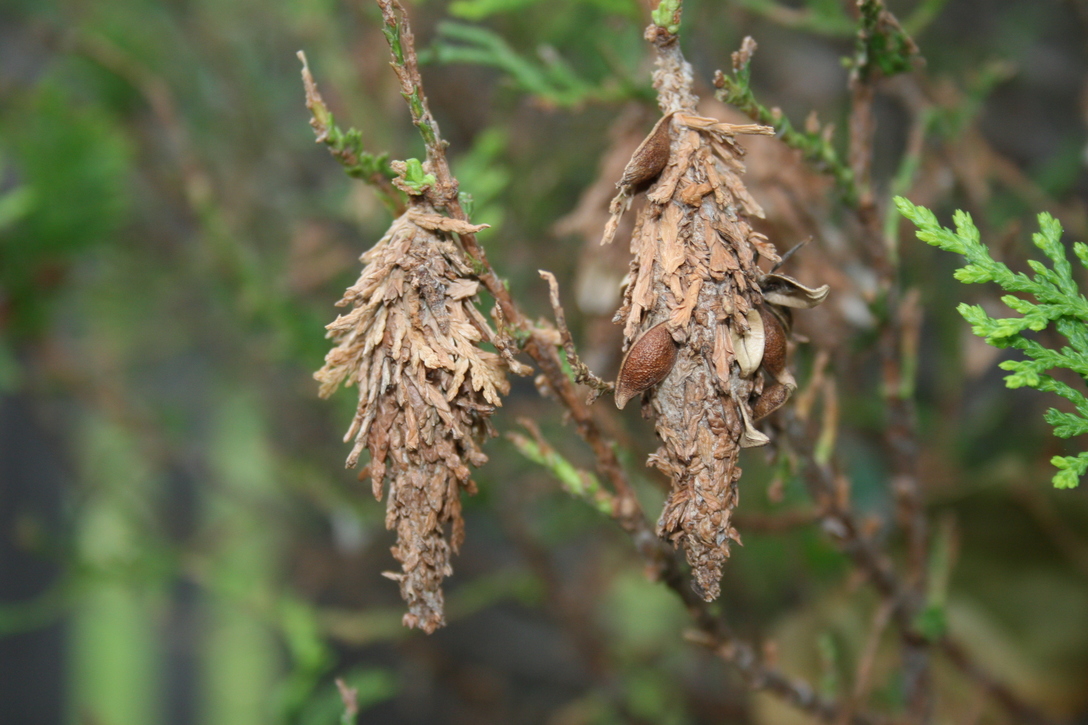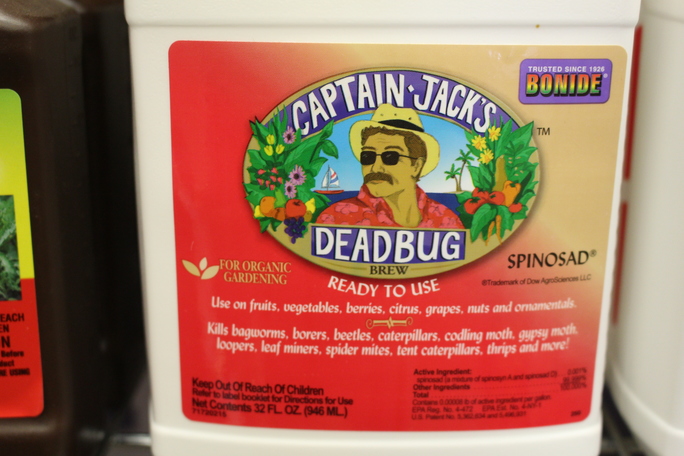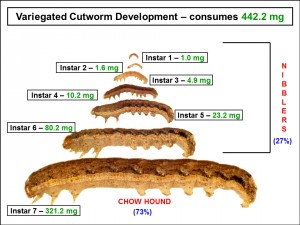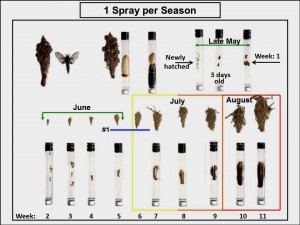–by Dr. Raymond Cloyd
Bagworms are Here!
Now is the time to start taking action against that “infamous” insect pest known as the bagworm (Thyridopteryx ephemeraeformis). Throughout Kansas, bagworm eggs have hatched and the young caterpillars are feeding on both broadleaf and evergreen trees and shrubs. Bagworms are primarily a pest of conifers but have expanded their host range to include a number of broadleaf plants, including: rose, honeylocust, and flowering plum. Hand-picking small caterpillars (along with their accompanying bag) and placing them into a container of soapy water will kill them directly. This practice, if feasible, will quickly remove populations before they can cause substantial plant damage.
For those not interested in hand-picking, a number of insecticides are labeled for use against bagworms including those with the following active ingredients (trade name in parentheses): acephate (Orthene), Bacillus thuringiensis subsp. kurstaki (Dipel/Thuricide), cyfluthrin (Tempo), lambda-cyhalothrin (Scimitar), trichlorfon (Dylox), indoxacarb (Provaunt), chlorantraniliprole (Acelepryn), and spinosad (Conserve). Many of these active ingredients are commercially available and sold under different trade names or as generic products. However, several insecticides may not be directly available to homeowners. The key to managing bagworms with insecticides is to apply early and frequently enough in order to kill the highly susceptible young caterpillars that are feeding aggressively on plant foliage (Figure 1). Older caterpillars that develop
Figure 1. Young Bagworm Feeding On Conifer (Author-Raymond Cloyd, Kansas State University)
later in the season (Figure 2) are typically more difficult to kill with insecticides. Furthermore, females feed less as they prepare for reproduction, which reduces their susceptibility to spray applications and any residues. The bacterium Bacillus thuringiensis subsp. kurstaki is active on young caterpillars; however, the active ingredient must be consumed to be effective, so thorough coverage of all plant parts and frequent applications are required. This compound is sensitive to ultra-violet light degradation and rainfall, which reduces residual activity. Spinosad is the active ingredient in a number of homeowner products, including: Borer, Bagworm, Tent Caterpillar and Leafminer Spray; Captain Jack’s DeadBug Brew; and Monterey Garden Insect Spray. These products work by contact and ingestion (stomach poison) although they are most
Figure 2. Older Bagworms (Author-Raymond Cloyd, Kansas State University)
effective when ingested and can be used against older or larger bagworm caterpillars (Figure 3). Cyfluthrin, lambda-cyhalothrin, trichlorfon, chlorantraniliprole, and indoxacarb may be used against both the young and the older caterpillars. However, thorough coverage of all plant parts, especially the tops of trees and shrubs, where bagworms commonly initiate feeding, and frequent applications are required. The reason multiple applications are needed when bagworms are first detected is because young bagworms “blow in” (called ‘ballooning’) from neighboring plants on silken threads. If left unchecked, bagworms can cause significant damage, and ruin the aesthetic quality of plants. In addition, bagworms may actually kill plants, especially newly transplanted small evergreens, since evergreens do not usually produce another flush of growth.
Figure 3. Captain Jack’s DeadBug Brew (Author-Raymond Cloyd, Kansas State University)
If you have any questions regarding the management bagworms contact your county horticultural agent, or university-based or state extension entomologist.
